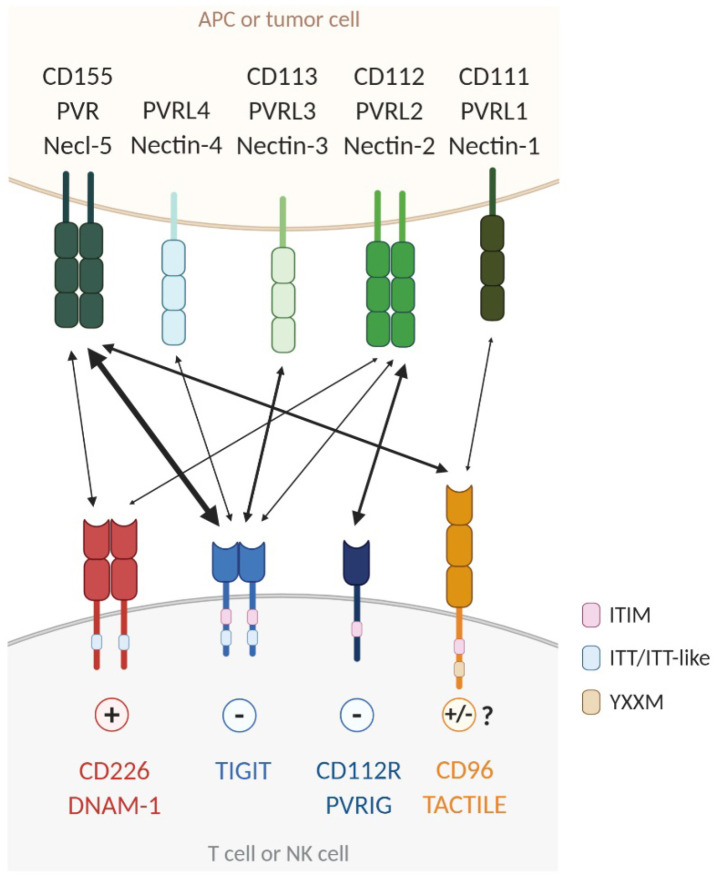Fig. 1.
Complex interactions of TIGIT family receptors with Nectin and nectin-like molecules. TIGIT, CD226, CD96, and CD112R are mainly expressed on activated T cells and NK cells. Their ligands, PVR, Nectin-1, Nectin-2, Nectin-3 and Nectin-4, are expressed on tumor cells and antigen-presenting cells (APCs). TIGIT and CD112R deliver inhibitory signals through ITIM motifs in their cytoplasmic domain. The ITT-like motif of TIGIT also plays a role in its negative signaling. CD226 delivers activating signals through an ITT/ITT-like motif. Both human and mouse CD96 sequences contain an ITIM motif, but human CD96 also contains an YXXM motif. CD96 signaling induces immunosuppression in mouse T and NK cells, but whether this receptor in human triggers inhibitory or activating signaling needs to be clarified. CD112R delivers an inhibitory signal through its ITIM motif. TIGIT binds to PVR, Nectin-2, Nectin-3 and Nectin-4. CD226 interacts with PVR and Nectin-2. CD96 binds PVR and Nectin-1. CD226 competes with both TIGIT and CD96 for PVR engagement and with CD112R for Nectin-2 binding. TIGIT has a greater affinity for PVR than CD226 and CD96. The interaction of Nectin-2 with CD112R is of higher affinity than with CD226. Interactions between receptors and ligands are depicted by two-sided arrows. The arrows are proportional to the reported affinities of the interactions.

